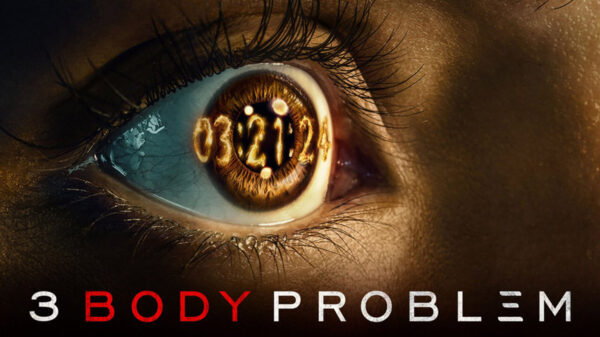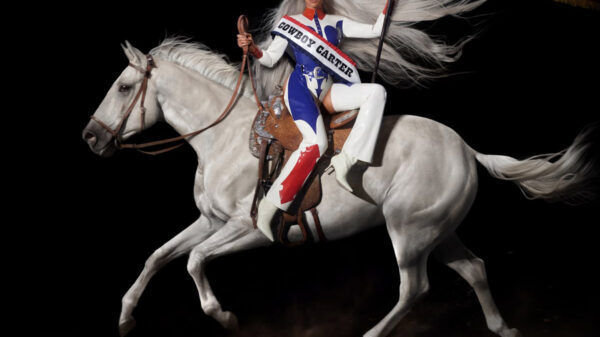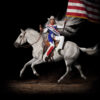An image of a white woman flipping Edmonton Oilers player Evander Kane the bird from behind the protective glass of a hockey rink went viral on May 7. It sparked the creation of a meme dubbed “Kane vs. Karen” by a social media user on Reddit.
“Karen” has become a popular term used to identify white women who weaponize their whiteness to either shift attention away from their racist behaviour or insight racial violence.
While the incident that resulted in the meme may not have been racially motivated, it is still about race and white supremacy.
The meme challenges viewers to consider the role of white women’s fandom in upholding and normalizing white supremacy in hockey culture.
Hockey pics that go hard
(📸: David Becker/ Getty Images) pic.twitter.com/2kV4cClQHc— Gino Hard (@GinoHard_) May 7, 2023
Defining white supremacy
Scholars have defined white supremacy as the “institutionalization of Whiteness and White privilege.” Institutionalization occurs when rules, standards or practices are nomalized to the extent that it has become so common we do not question it.
White privilege describes the unearned advantages white people receive based on the colour of their skin. Whiteness acts as an invisible backpack of privilege.
American scholar, writer and educator bell hooks described how white supremacy legitimizes and advances patriarchy, settler-colonial capitalism and racism — factors that are woven deeply into the culture of men’s ice hockey.
White supremacy is invisibilized and normalized in hockey culture. When white supremacy is challenged, hockey culture pushes back. For example, a coach from Surrey, B.C., was suspended after pulling his U-11 players off the ice to protect them from anti-Black racism.
White supremacy culture
As white settler Canadian women, we recognize that “the burdens of dismantling white supremacy and decolonizing the sport of hockey are more justly shouldered by white settler Canadians and the hockey establishment.”
Men’s ice hockey upholds white supremacy through erasure, exclusion and mandated conformity.
The erasure of the history of the Colored Hockey League, as highlighted by sport researchers Alex Mackenzie and Janelle Joesph, is an example of how white supremacy erases those who aren’t considered white.
The important contributions made by the league, including the butterfly technique, slap-shot and entertainment during intermissions, were omitted as a result.
White supremacy is also achieved through exclusion. Ice hockey has historically been — and continues to be — a white space.
Even though one in four Canadians identifies as racialized, and the United States is also racially diverse, the sport remains a bastion of whiteness.
A total of 83.6 per cent of the NHL’s workforce is white and over 90 per cent of players and nearly all coaches and officials are white.
Despite the NHL’s “hockey is for everyone” branding, whiteness remains privileged. Racialized hockey players are expected to conform to the sport’s culture and values.
Whiteness and surveillance
It’s important to understand the Kane vs. Karen meme within the broader historical and cultural context of white women patrolling, policing and surveilling Black bodies based on white supremacist notions of law and order.
Racialized hockey players are often held to a higher moral standard than their white counterparts. Former NHL player P.K. Subban, for example, is currently under fire for a fat-shaming comment about pop singer Lizzo. But the racism Subban endured as a Black athlete in a white sport has not received the same attention.
White supremacy ensures we are constantly surveilling Black players and holding them to higher moral standards than white players. This stands in sharp contrast to how racialized players are expected to behave when faced with racism.
Comments against racialized players are silenced, downplayed or ignored. Racialized players are expected to defend the sport and themselves, like Vegas Golden Knights player Zach Whitecloud, who had to defend his Dakota heritage against an ESPN commentator who said his last name was better suited for toilet paper.
Racialized players are also expected to take the high road when confronted with violence, as Kane did when he blew a kiss to the fan who flipped him off.
Hockey fan culture
Fans also play a key role in upholding white supremacy in hockey — particularly white women because ice hockey has a predominantly white fan base in North America. The exclusionary practices that keep men’s ice hockey elite, heterosexual and white are reflected in its fandom. If professional athletes are not free to be Black or Indigenous in ice hockey, we can expect the same for fans.
Legal scholar Martine Dennie has written about what it means to be a hockey fan in Calgary. To belong, all a fan needs to do is wear a Flames jersey. But even this approach to fandom doesn’t stop racial hierarchies from forming. It still “preserves the whiteness of hockey fandom.”
Combating white supremacy
As white women, researchers and fans, we are calling on other white women to be aware of how we engage with racialized players and fans. Combating white supremacy involves exposing the way it operates as an undercurrent.
True interrogations of white supremacy don’t focus on individual acts of overt racism — instead, they reveal how normalized and systemic it is.
Organizations like the Black Girl Hockey Club are working to make hockey more inclusive for players and fans of all backgrounds. They are doing this by challenging the perception of hockey being a predominantly white sport.
The Kane vs. Karen meme challenges white women to consider our role in perpetuating white supremacy. Addressing and deconstructing the whiteness of ice hockey is long overdue.
Written by Teresa Anne Fowler, Assistant Professor, Education, Concordia University of Edmonton and Shannon D. M. Moore, Assistant professor of social studies education, Department of Curriculum Teaching and Learning, Faculty of Education, University of Manitoba
This article is republished from The Conversation under a Creative Commons license. Read the original article.
![]()
5 Ways to Support HipHopCanada:
- Submit Your Music
- Follow Canadian Fresh (HipHopCanada’s Spotify Playlist)
- Follow us on Instagram
- Follow us on X (Twitter)
- Like us on Facebook



















































